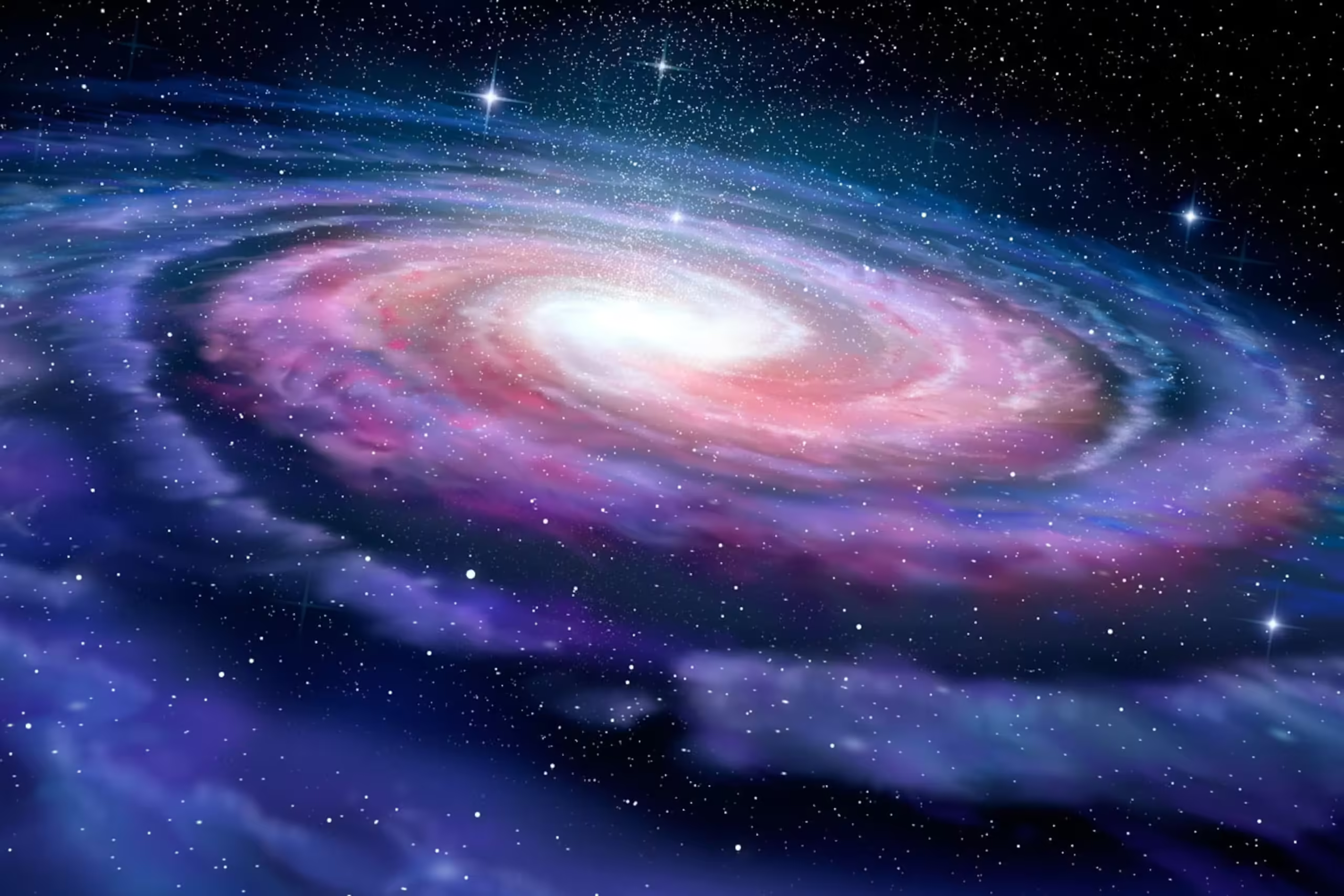The Milky Way Galaxy: Its Formation, Lifespan, and Future
The Milky Way Galaxy, a cute spiral of stars, dust, and fuel, isn’t simply the residence to our solar device; it’s an essential difficulty of test for astronomers who are seeking out to recognize the origins and fate of galaxies sooner or later of the universe. The formation, evolution, and eventual destiny of the Milky Way galaxy are pivotal to our facts of cosmic tactics. In this accelerated exploration, we’ll dive into its formation, form, lifespan, and the far flung destiny that awaits it.
1. The Milky Way: A Giant Among Galaxies
The Milky Way is a barred spiral galaxy, because of this that its form includes a crucial bar-lengthy-hooked up middle of stars, surrounded via spiral palms full of stars, nebulae, and dust. At the coronary heart of the Milky Way lies a supermassive black hole, Sagittarius A*, which has a mass approximately four million times that of our Sun. The galaxy spans about 100,000 mild-years in diameter, containing among a hundred to 4 hundred billion stars, and it’s domestic to not satisfactory our solar machine however moreover tens of tens of millions of possibly liveable planets scattered inside the course of its expanse.
The Milky Way is part of a set of galaxies referred to as the Local Group, which includes about fifty four galaxies, with the largest being the Andromeda Galaxy. Despite its massive period, the Milky Way is only considered one of billions of galaxies in the observable universe.
2. Formation of the Milky Way: From Cosmic Dust to Star-Studded Beauty
The formation of the Milky Way Galaxy commenced over thirteen billion years within the past, quickly after the Big Bang. The universe grow to be first of all composed normally of hydrogen and helium, the lightest factors, and people gases commenced out to clump collectively due to gravity. This device delivered on the number one technology of stars and, finally, the formation of galaxies. The Milky Way’s creation can be damaged down into several degrees.
Cosmic Inflation and the First Galaxies
Just moments after the Big Bang, the universe extended in a way known as cosmic inflation. As the universe cooled, count variety commenced to condense into the number one clouds of gasoline. These clouds had been the seeds of galaxies. The Milky Way in all likelihood started out out as a small protogalaxy, filled with fuel and dark depend number, which slowly began pulling in extra remember to form stars.
Mergers and Accretion: Growth with the useful resource of Collision
The early Milky Way became now not a unmarried entity however a collection of smaller galaxies and gas clouds. Over time, the ones smaller galaxies merged, developing a larger form. These mergers performed a important characteristic in shaping the cutting-edge spiral shape of the Milky Way.
Accretion, or the gradual accumulation of depend, also contributed to the galaxy’s increase. Gas from the surrounding environment, in addition to darkish matter range, turned into pulled in with the useful resource of the Milky Way’s gravitational pressure, fundamental to the formation of recent stars.
Role of Dark Matter

Dark count number, which debts for around eighty 5% of the mass of the galaxy, has performed an vital function in shaping the Milky Way. Though invisible and detectable best via its gravitational consequences, darkish rely has inspired the distribution of stars, gas, and dirt in the galaxy. It is likewise accountable for the flat, disk-like form of spiral galaxies.
3. The Structure of the Milky Way: A Cosmic City
The Milky Way includes numerous key additives that paintings together in an tough cosmic dance:
The Galactic Core
At the coronary heart of the Milky Way lies a supermassive black hollow, Sagittarius A*, surrounded through a dense attention of stars. This black hollow exerts substantial gravitational pull, influencing the motion of stars close to the center. The galactic middle is also domestic to older stars and remnants from in advance periods of famous person formation.
The Spiral Arms
The Milky Way has severa terrific spiral palms, that are regions full of stars, gasoline, and dust. These hands aren’t consistent however as an opportunity rotate all through the galaxy’s center. As stars shape in the ones arms, they emit moderate, and the gasoline and dirt in the ones areas make contributions to ongoing stellar begin. The Orion Arm, which includes our solar device, is such a spiral hands.
The Galactic Disk
The disk of the Milky Way is wherein the majority of stars, nebulae, and planets are positioned. It is a flat, rotating place that consists of maximum of the galaxy’s seen depend. The disk includes younger, vibrant stars and is surrounded by using areas of gasoline and dust. The disk’s form moreover performs a large position in the galaxy’s spiral shape.
The Halo and Globular Clusters
Beyond the disk lies the Milky Way’s halo, a round location of older stars, in addition to dark rely. The halo in all fairness populated in contrast to the disk however includes many ancient stars and globular clusters—dense collections of stars which might be maximum of the oldest inside the galaxy. The halo extends a ways past the disk and is critical to the Milky Way’s conventional mass and form.
4. The Lifespan of the Milky Way: A Galactic Evolution
The Milky Way, like several galaxies, has a finite lifespan. Its modern-day section is characterized with the useful aid of active megastar formation, but this could now not very last all the time. Over the following numerous billion years, the galaxy will revel in several essential levels:
The Age of Active Star Formation
At present, the Milky Way is a fairly lively galaxy, constantly forming new stars from the interstellar gas. Regions of the galaxy’s spiral arms are celeb-forming factories, wherein dense clouds of gas fall apart to create new stellar systems. This active segment will hold for numerous billion years, so long as the galaxy has sufficient fuel to fuel the formation of new stars.
The Gradual Decline in Star Formation
However, through the years, the Milky Way will in the long run run out of the raw fabric had to create new stars. The gas clouds, which offer the gasoline for celebrity formation, could be ate up or blown away with the aid of supernovae, stellar winds, and the vital black hollow. As a give up result, the fee of film celebrity formation will steadily lower. The galaxy will start to appearance older, with fewer extra youthful stars being born.
The Fate of Stellar Remnants
As the celebrities in the Milky Way age, they may enter their very last degrees of evolution. Smaller stars like our Sun will expand into crimson giants, dropping their outer layers and leaving in the back of white dwarfs. Larger stars will explode as supernovae, growing neutron stars or black holes. These stellar remnants will make contributions to the evolution of the galaxy, but no new stars may be born from them.
The End of Star Formation and the “Red and Dead” Galaxy
Once the Milky Way runs out of gas and its stars have exhausted their nuclear gasoline, it’s going to input a segment known as the “purple and useless” united states of america of america. In this segment, the galaxy can be populated simplest with the resource of using growing vintage stars. There can be no new stars being unique, and the galaxy will become dimmer as its stars burn out. This length should ultimate for masses billions of years, however in the long run, the Milky Way turns into a quiet, elliptical galaxy complete of handiest the oldest stars.
5. The Future of the Milky Way: Mergers, Collisions, and Cosmic Evolution

The Milky Way’s future is cautiously tied to its interactions with neighboring galaxies, specifically the Andromeda Galaxy.
The Andromeda Collision
In about 4.Five billion years, the Milky Way will collide with the Andromeda Galaxy. This cosmic collision is inevitable because of the galaxies’ mutual gravitational enchantment. However, no matter the reputedly violent nature of the collision, the substantial distances among stars recommend that direct collisions among stars aren’t probably. Instead, the interplay will fire up the fuel and dust in each galaxies, primary to big bursts of celebrity formation.
The merger will in all likelihood result in a trendy galaxy, frequently called “Milkomeda.” The galaxies will grade by grade combine into a larger, elliptical galaxy. This will mark the cease of the spiral shape of the Milky Way.
The Milky Way’s Dark Future: The Fate of the Solar System
Once the Milky Way and Andromeda merge, the solar machine will probable be displaced proper right into a one-of-a-kind a part of the newly formed galaxy. In addition, the Sun will attain the cease of its lifestyles long earlier than the merger. In about five billion years, it’ll extend into a crimson giant, engulfing the inner planets, which includes Earth. This will mark the loss of life of our sun system, despite the fact that the best fate of the Earth relies upon at the Sun’s precise conduct for the duration of its purple huge section.
The Final State: Black Holes and Stellar Remnants
After the Milky Way has merged and big name formation has ceased, the galaxy may be left with normally antique stars and stellar remnants. Supermassive black holes at the facilities of galaxies, which includes Sagittarius A*, can also hold to play a feature inside the evolution of the galaxy for billions of years. In the very a ways off future, even the ones black holes will slowly lose mass via a process called Hawking radiation, sooner or later fundamental to a chilly and dark universe.
6. Conclusion: A Galactic Story of Birth, Life, and Death
The tale of the Milky Way is one in every of ordinary alternate. From its formation in the early universe to its ongoing techniques of movie star formation and cosmic interactions, the galaxy has evolved into the sprawling spiral we’ve a look at in recent times. But like each galaxies, the Milky Way is not eternal. Over billions of years, it’ll gradual its charge of megastar formation, merge with other galaxies, and ultimately fade right into a quieter, “vain” usa.
Understanding the Milky Way’s formation, lifespan, and eventual lack of life offers profound insights into the life cycle of galaxies, and with the aid of manner of extension, the broader techniques governing the universe. The Milky Way, our cosmic home, is a reminder of the dynamic and ever-converting nature of the universe we inhabit.



1 thought on “The Milky Way Galaxy: Its Formation, Lifespan, and Future”